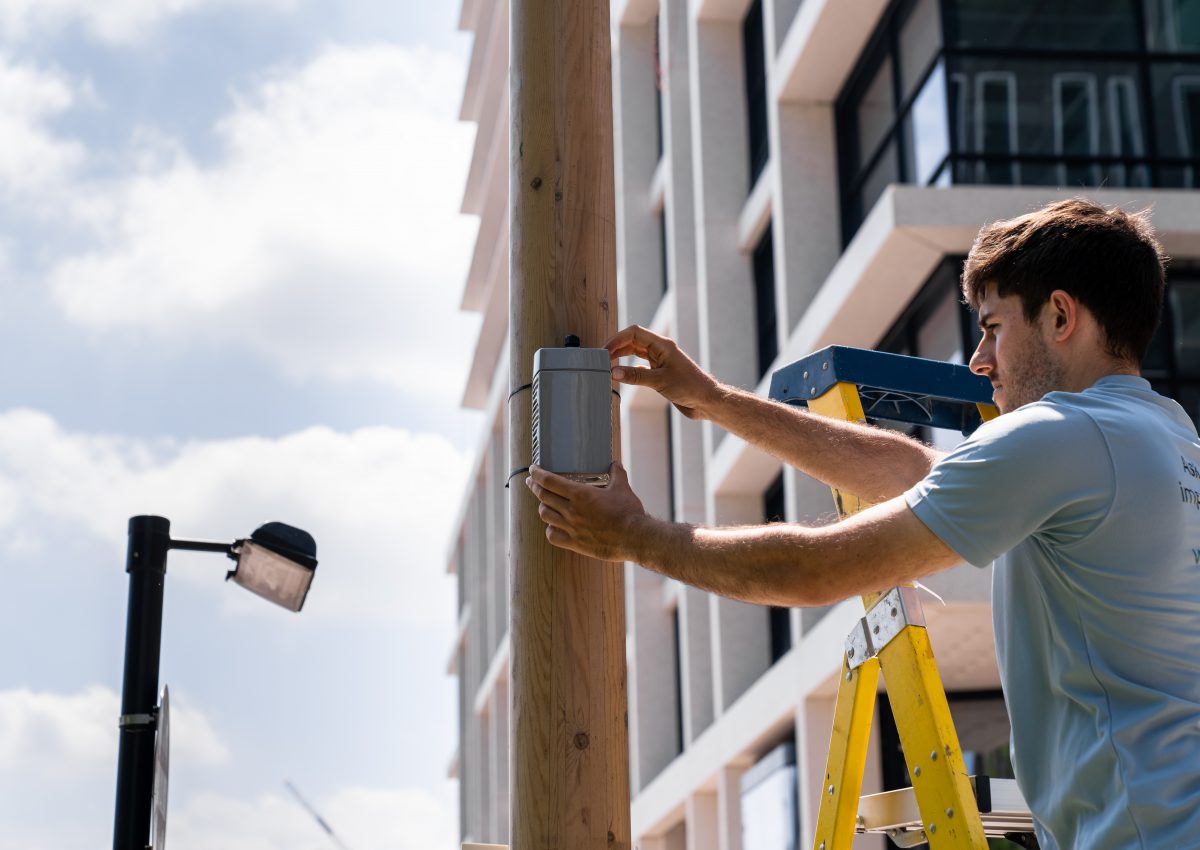
We can’t see air pollution with our eyes. But that doesn’t mean we can’t make it visible.
That is part of the initiative to build the world’s densest air quality sensor network in Camden. The project is a partnership between The Camden Clean Air Initiative, Camden Council, and AirLabs to install 250 advanced air quality sensors across Camden. These sensors will capture and report local air quality data every minute and map air pollution in real-time.
Imagine being able to choose how you get to work on Monday or which route to walk your children to school on Thursday based on levels of air pollution. That is exactly the aspiration of the initiative – providing real-time street-by-street air quality data to enable better decision-making for our health.
Hyper-local air quality information will be monitored by a network of AirNode sensor devices which will be installed on buildings, lampposts, or other suitable places. So start looking up as you take a walk in Camden and keep an eye out for one on your local lamppost. Once you spot one then let us know and you can adopt an AirNode as part of our upcoming adoption programme. Watch this space!
AirNodes will provide at least 100x more spatial resolution and refresh 60x more regularly than existing air quality reference stations. The network will cover some of the most underrepresented and vulnerable areas such as schools, transport hubs, healthcare facilities, and busy intersections and each device will monitor a range of air pollutants such as nitrogen dioxide, carbon dioxide, and ozone.
We hope the project will be a blueprint for other London boroughs and cities around the world and will help make real-time air quality monitoring a must-have for the public sector. Poor air quality is estimated to cost society, businesses, and our NHS services more than £15 billion a year. Real-time air quality information will be integral to understanding the linkages with the health and well-being of the public and setting new standards for air quality just as the UK government plans to set new legal targets on air pollution by end of 2022, amid increasing concerns over health impacts.
Air pollution is sometimes dubbed the invisible killer. In the UK it accounts for approximately 4,000 premature deaths a year which is more than road traffic accidents. It’s a potent killer yet we can’t see it. Not anymore. The data will provide a street-by-street image of air quality making the issue of air pollution visible to our eyes and allowing us to make better decisions about our health.

